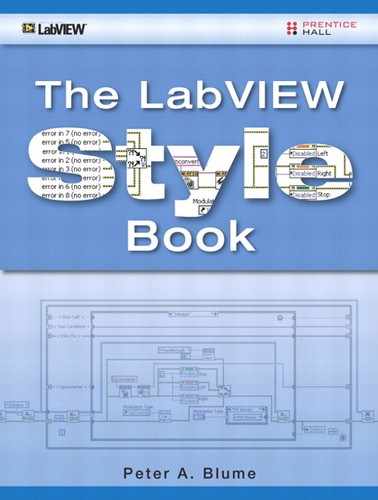Foreword
I’ve been writing VIs for a long time as a member of the LabVIEW R&D team at National Instruments. During my first week of LabVIEW training many years ago, I decided to write a LabVIEW version of my favorite card game, called “Set.” It took me a while, but I eventually finished it, and it was probably some of the ugliest LabVIEW code you have ever seen. As Peter Blume would say, my code was THE definition of “spaghetti.” Worse yet, the front panel was full of neon-colored controls and indicators that were blindingly bright for no good reason. My code was functional, but it was not at all useable, and certainly not maintainable. I tried to add some new functionality a few years ago (after I was much more familiar with LabVIEW programming), but I quickly gave up because I had no idea how my own code worked.
Many years later, I can comfortably say that my programming style has improved leaps and bounds over those initial months with LabVIEW. However, I can also say without a doubt that my growing pains regarding LabVIEW programming style would have been all but eliminated had The LabVIEW Style Book been around back then. This book is a fully comprehensive resource, covering every aspect of VI style, from the highest level (project planning and organization) to the smallest detail (wires with too many bends). If I had read this book while I was learning LabVIEW, my code would have been many times more useable and maintainable from the start.
The LabVIEW Style Book is a must-read for every LabVIEW developer. Not only does it contain essential style rules for any new LabVIEW developer, it is also a necessary refresher for seasoned LabVIEW veterans. In particular, there are some chapters (like Chapter 6, “Data Structures,” Chapter 7, “Error Handling,” Chapter 8, “Design Patterns”) that contain crucial programming tips and techniques not available in any other single resource. As one of the VI style advocates in LabVIEW R&D, I will definitely be recommending that new VI developers on my team read this book, and I’m confident that I’ll be referencing it frequently in style discussions with my more experienced colleagues.
Another truly unique feature of the book is the impressive number of example VIs that Peter uses to illustrate good (and sometimes bad) style. With his decade-and-a-half of LabVIEW experience, Peter has a vast library of VIs that he, his employees, or his customers have written. He utilizes this library of code effectively to illustrate applicable points in every chapter. What’s more, he will sometimes take the same example over the course of several chapters and refine it more and more with style rules picked up along the way. This gives us a “real-time” view of how good style can positively affect VIs as they are being developed.
So with LabVIEW celebrating 20+ years of inspiring engineers, scientists, and even children worldwide, I’m confident that readers of the definitive book on LabVIEW style will ultimately appreciate the time and effort savings that result from developing VIs with consistent, appropriate style. If you’re a LabVIEW beginner, get ready for your VIs to become—as Peter would say—“awe-inspiring” …and if you’re a LabVIEW expert, you’re going to learn a lot, too. I know I did!
Darren Nattinger
Staff Software Engineer, LabVIEW R&D
National Instruments Corporation
Darren Nattinger has worked at National Instruments for eight years. He is currently the primary developer for the VI Analyzer Toolkit and the Report Generation Toolkit for Microsoft Office. He was also a reviewer for The LabVIEW Style Book.
